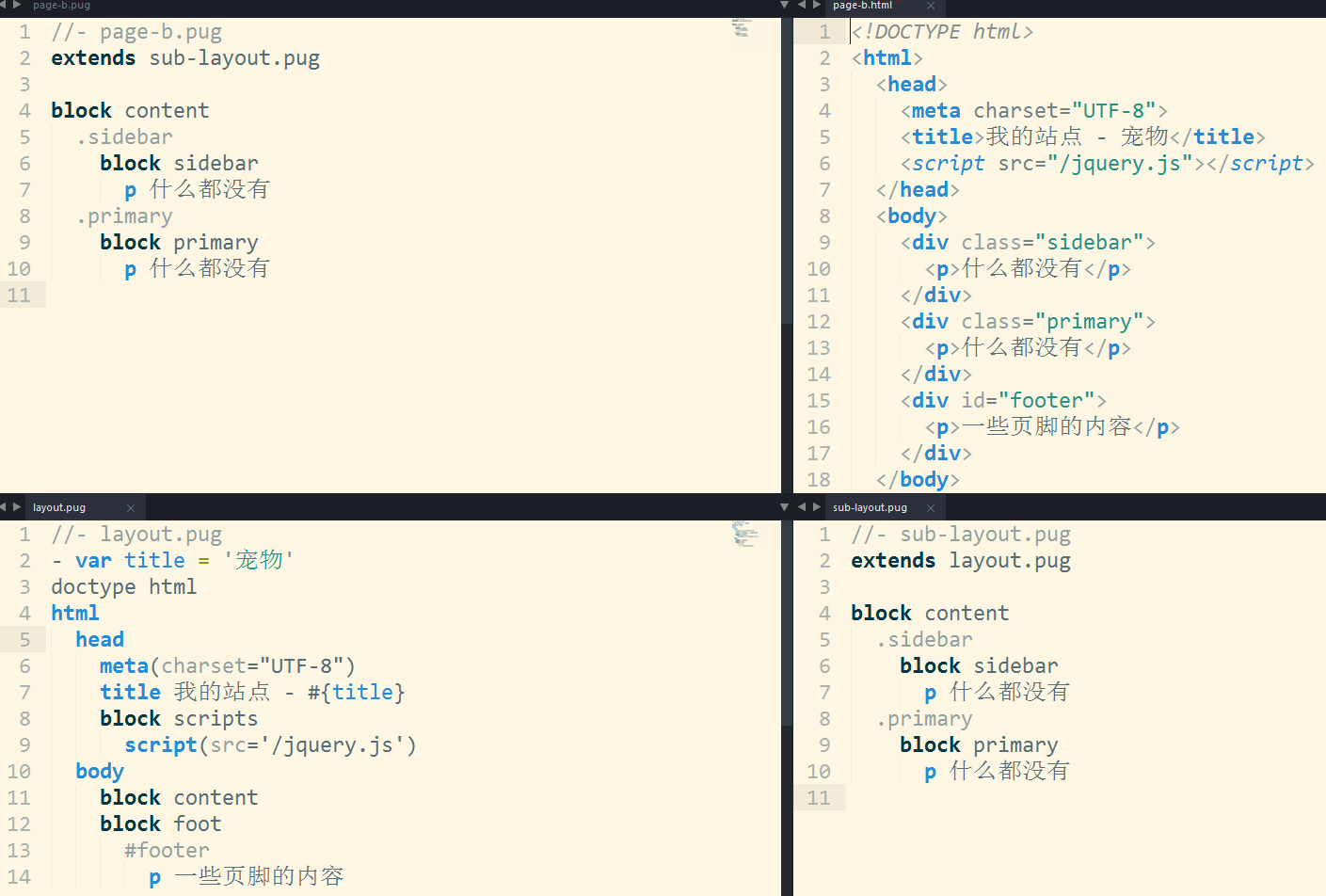

- PUGJS EXTENDS ABSOLUTE PATH HOW TO
- PUGJS EXTENDS ABSOLUTE PATH INSTALL
- PUGJS EXTENDS ABSOLUTE PATH UPDATE
- PUGJS EXTENDS ABSOLUTE PATH CODE
- PUGJS EXTENDS ABSOLUTE PATH WINDOWS


After craco is installed, create an empty file.
PUGJS EXTENDS ABSOLUTE PATH INSTALL
yarn yarn add craco/craco npm npm install craco/craco. It's the spiritual successor for react-app-rewired, which has ceased development. JOptionPane.showMessageDialog(frame, sb.toString()) craco is a wonderful tool which allows us to extend CRA 2.0 configs without ejecting. Public static void main(String args) throws IOException, URISynta圎xception pathlib.Path () PosixPath ('.') relative path to the current folder. Let’s start with importing pathlib and create a path object.
PUGJS EXTENDS ABSOLUTE PATH HOW TO
Let’s see different cases of the file path in java with a simple program. In this article, we will go through 10 examples to master how to use the pathlib module.
PUGJS EXTENDS ABSOLUTE PATH WINDOWS
This typically involves removing redundant names such as “.” and “.” from the pathname, resolving symbolic links (on UNIX platforms), and converting drive letters to a standard case (on Microsoft Windows platforms). This method first converts this pathname to absolute form if necessary, as if by invoking the getAbsolutePath method, and then maps it to its unique form in a system-dependent way. getCanonicalPath(): This path method returns the canonical pathname that is both absolute and unique.On Microsoft Windows systems, a relative pathname is made absolute by resolving it against the current directory of the drive named by the pathname, if any if not, it is resolved against the current user directory. On UNIX systems, a relative pathname is made absolute by resolving it against the current user directory. If the file object is created using a relative path, the absolute pathname is resolved in a system-dependent way. If File is created with absolute pathname, it simply returns the pathname. getAbsolutePath(): This file path method returns the absolute path of the file.If URI is used as argument then it removes the protocol and returns the file name. If String pathname is used to create File object, it simply returns the pathname argument. getPath(): This file path method returns the abstract pathname as String.Enter SOME_STRING to the Ignored Variables field in the Path Variables dialog. In this case, you can add this parameter to the list of ignored variables in order to avoid confusion. You can also use the list of ignored variables if, for example, a program argument passed to the JVM in a run/debug configuration has the same format as an internal ($SOME_STRING$) path variable. If you don’t want to do that (for example, if you are not going to use files or directories with the unresolved path variables), you can add them to the list of ignored variables. If the IDE detects any, it will ask you to define values for them. When you open a project, IntelliJ IDEA checks if there are any unresolved path variables.
PUGJS EXTENDS ABSOLUTE PATH UPDATE
Share the IML file through your version control system.Īfter your teammates update their projects from VCS, they will change the PATH_TO_LIB variable value so that it points to the library location on their computers. Press Ctrl+Alt+S to open the IDE settings and select Appearance & Behavior | Path Variables.Ĭlick and enter the name of the new variable (for example, PATH_TO_LIB) and its value that points to the library location on your disk. If you want to make sure that the path is correct on your teammates' computers after they update the project from VCS, you can create a new variable. Create a new path variableįor example, you have a third-party library that is not stored in your project directory. To configure path variables, in the Settings/Preferences dialog Ctrl+Alt+S, select Appearance & Behavior | Path Variables.
PUGJS EXTENDS ABSOLUTE PATH CODE
With path variables, you can flexibly share your code so all the references to the linked resources are resolved properly as the path variables accept the values according to the configuration on each specific computer. $MODULE_IML_DIR$: stands for the directory that contains the module. Path variables If you are working in a team, these absolute paths on the computers of your teammates may differ. $MODULE_WORKING_DIR$: stands for the for module content directory. $PROJECT_DIR$: stands for the directory where your project is stored. $USER_HOME$: stands for your home directory. In IntelliJ IDEA, there are some pre-defined variables: If you are working in a team, these absolute paths on the computers of your teammates may differ. Path variables are placeholders that stand for absolute paths to resources that are linked to your project but are stored outside it.


 0 kommentar(er)
0 kommentar(er)
